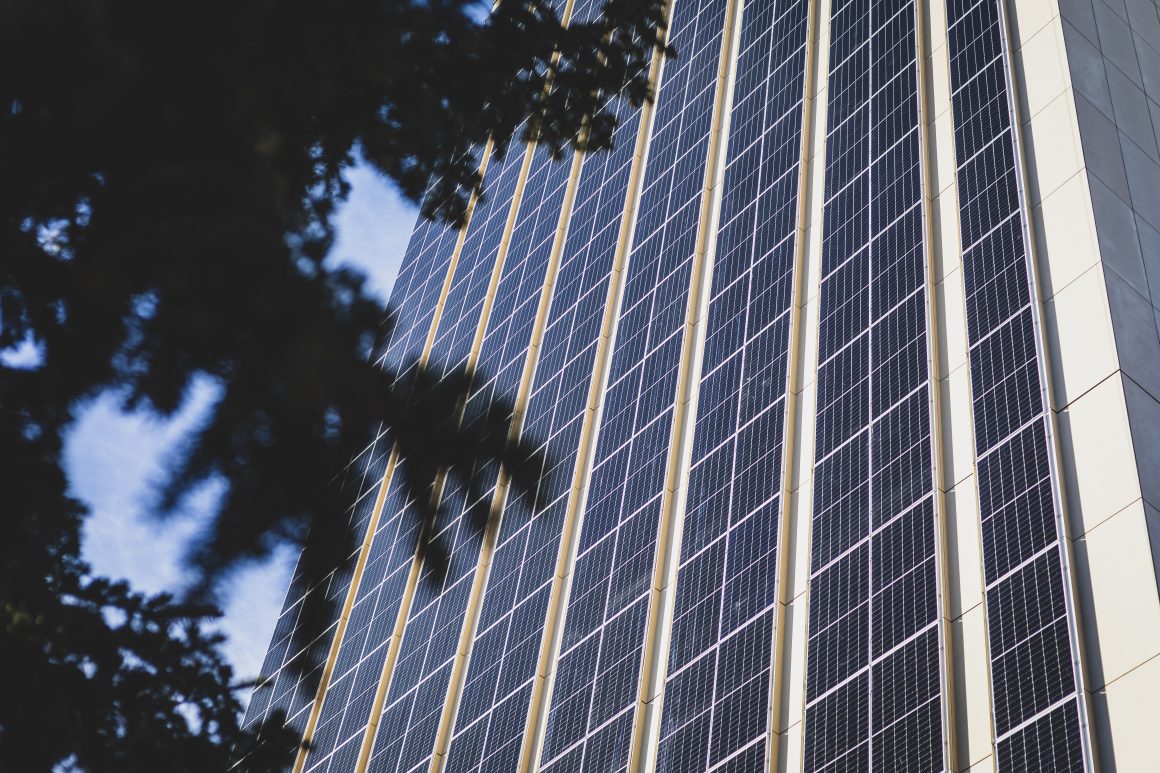
New Social Sciences building solar panel wall is a promising sign for future sustainability
By Ansharah Shakil, March 13 2023—
In February, the University of Calgary completed the installation of a solar panel wall on the south side of the Social Sciences building in an exciting step to further its Climate Action Plan.
In an interview with the Gauntlet, Boris Dragicevic, associate vice-president of facilities development at the U of C, and Joanne Perdue, associate vice-president of sustainability, explained that rather than replacing the old panels, 1,100 square metres of solar photovoltaic (PV) panels were installed instead.
“We said, is there an opportunity here to do something better than just a facade to the building?” said Dragicevic. “So we looked at putting photovoltaics on the south side, and metal panels on the north side to match the look because there’s no sun to be had on that side.”
Working together with the sustainability team allowed for the idea of the solar panel wall to come to fruition — part maintenance needed for the Social Sciences building and part new chapter in the university’s future of sustainability.
“The photovoltaics will produce 225 kilowatts of electricity,” said Dragicevic. “That will cover 90 per cent of the electrical load power for the Social Sciences building.”
Though Dragicevic says transformers to hook up the photovoltaics still need to arrive in June, the solar panel wall will be ready for the next academic year.
This new project is one of many steps that U of C intends on taking to accomplish its Climate Action Plan goal of becoming a carbon-neutral campus by 2050.
Perdue explains that there are a series of targets to reach that point and multiple steps which have been accomplished so far.
“We were striving for a 30 per cent reduction [of greenhouse gas emissions] by 2025 and we exceeded that milestone, so we’re sitting at around 37 per cent reduction right now,” said Perdue.
She adds that a current project is the university’s Energy Efficiency Program, now in its final year, which assists in emission reduction and utility cost avoidance. The multi-year, multi-phase Energy Efficiency Program also helps reduce deferred maintenance.
“Old things at the end of their service life that we might otherwise not have had room for have been upgraded so it delivers much better indoor environmental quality for our students and staff,” said Perdue.
Though the Energy Efficiency Program is in its final year, energy-efficient buildings are another important part of the Climate Action Plan.
“Every time we add a new building, we of course have the potential to grow our greenhouse emission current,” Perdue said. “So how do you get to zero when you’re still growing? And this is a challenge for many organizations. So working in partnership with Boris on many projects, we design the new buildings to be ultra energy efficient while maintaining healthy indoor air quality for people.”
An example of such a project, she says, is the MacKimmie Complex, the university’s first net-zero carbon building. Looking forward to future projects, one of the core areas is decarbonization of the district energy system.
“We have a district energy system based on natural gas, so what we’re working on now is the planning study of the decarbonization of that system,” said Perdue. “As we look forward for the next 20, 30, 50 years for the university, what does that energy system of the future look like? We’ve identified that this is a key opportunity for the university in terms of reaching that long-range goal, and towards the end of the year we’ll have the outcomes of that study and that’s going to give us a direction in terms of where we head next.”
More sustainability projects like the Solar Panel Wall are forthcoming in the future in a plan to achieve the Climate Action Plan’s carbon-neutral goal.
“Beyond that, we keep working on making sure existing buildings or new buildings are energy-efficient and net-zero ready,” said Perdue. “We combine that with green power procurement strategies, and that’s our strategic plan to try to move towards our 2050 aspirational goal.”
The full details of the Climate Action Plan, its targets, approaches and plan summary can be viewed on the U of C website.
